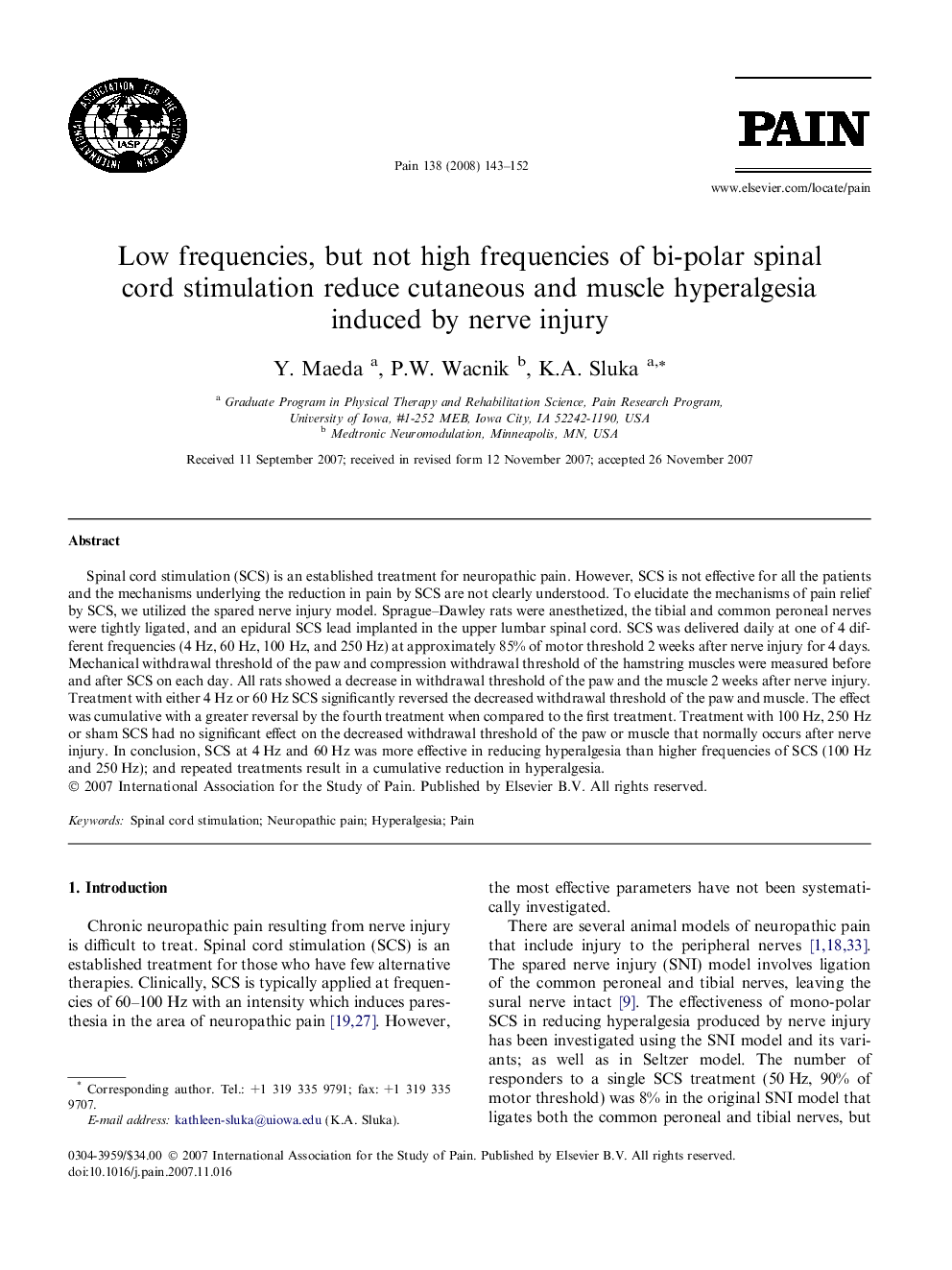| کد مقاله | کد نشریه | سال انتشار | مقاله انگلیسی | نسخه تمام متن |
|---|---|---|---|---|
| 915002 | 918426 | 2008 | 10 صفحه PDF | دانلود رایگان |

Spinal cord stimulation (SCS) is an established treatment for neuropathic pain. However, SCS is not effective for all the patients and the mechanisms underlying the reduction in pain by SCS are not clearly understood. To elucidate the mechanisms of pain relief by SCS, we utilized the spared nerve injury model. Sprague–Dawley rats were anesthetized, the tibial and common peroneal nerves were tightly ligated, and an epidural SCS lead implanted in the upper lumbar spinal cord. SCS was delivered daily at one of 4 different frequencies (4 Hz, 60 Hz, 100 Hz, and 250 Hz) at approximately 85% of motor threshold 2 weeks after nerve injury for 4 days. Mechanical withdrawal threshold of the paw and compression withdrawal threshold of the hamstring muscles were measured before and after SCS on each day. All rats showed a decrease in withdrawal threshold of the paw and the muscle 2 weeks after nerve injury. Treatment with either 4 Hz or 60 Hz SCS significantly reversed the decreased withdrawal threshold of the paw and muscle. The effect was cumulative with a greater reversal by the fourth treatment when compared to the first treatment. Treatment with 100 Hz, 250 Hz or sham SCS had no significant effect on the decreased withdrawal threshold of the paw or muscle that normally occurs after nerve injury. In conclusion, SCS at 4 Hz and 60 Hz was more effective in reducing hyperalgesia than higher frequencies of SCS (100 Hz and 250 Hz); and repeated treatments result in a cumulative reduction in hyperalgesia.
Journal: PAIN - Volume 138, Issue 1, 15 August 2008, Pages 143–152